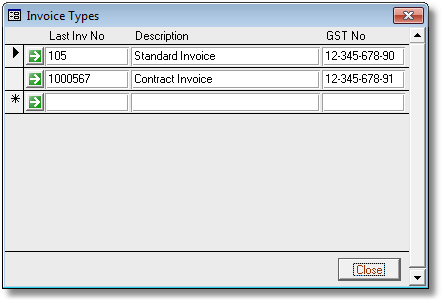When an invoice is created it is assigned to one of any number of configurable invoice types. Many companies just use a single invoice type, others use multiple invoice types to satisfy administrative or legal requirements.
Invoice types can be created, edited or deleted from the Invoice Types dialog (accessed using the Tools->Setup->Invoice Types menu command).
Printed Invoice customisation can be achieved using invoice template files (see the PRS Administration guide for a detailed description of Report Templates).

Invoice Type Parameter |
Description |
Last Invoice Number |
The next invoice number is determined by finding the first unused invoice number greater than this number. The last invoice number is updated when a new invoice is first saved. Initialise this value to one less than the first invoice number you wish to use. Multiple invoice types can share the same number range, just initialise them to have the same Last Invoice Number.
Setting the last invoice number to zero will disable the further use of the invoice type (the invoice type will be excluded from invoice type drop-down lists). |
Tax number |
The alphanumeric tax number to be display on printed invoices. |
Edit invoice templates |
Pressing the Goto button |